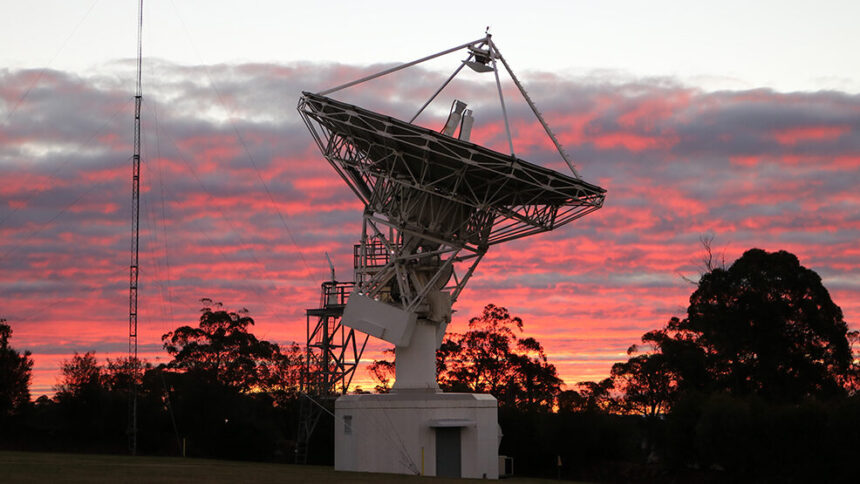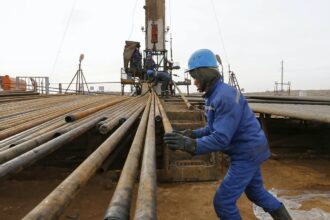Lockheed Martin, the U.S. defense and aerospace giant, has secured an option to acquire 25% of the production output from Sunrise Scandium, a rare earth mining project in Australia. The deal underscores growing interest in critical materials such as scandium, which are essential for lightweight aerospace alloys, advanced electronics, and next-generation defense technologies.
The Strategic Importance of Scandium
Scandium is a rare and valuable element widely recognized for its unique properties. When alloyed with aluminum, scandium produces lightweight yet extremely strong metals, making it ideal for aircraft components, missile systems, and other high-performance applications. In addition, scandium’s use in solid oxide fuel cells and next-generation electronics has broadened its strategic significance.
Analysts note that access to reliable scandium supply has long been a challenge, as commercial-scale production is limited to a handful of projects worldwide. Lockheed Martin’s partnership with Sunrise positions the company to secure a stable supply of a critical material vital to both defense and commercial aerospace applications.
Details of the Sunrise Scandium Option
Under the agreement, Lockheed Martin has obtained the right—but not the obligation—to purchase up to a quarter of Sunrise’s total scandium output once the project reaches commercial production. Sunrise Scandium, headquartered in Australia, is developing one of the largest known scandium deposits, located in the country’s eastern regions.
Project developers have highlighted Sunrise as a world-class resource with the potential to supply thousands of tons of scandium annually, meeting growing demand from aerospace, defense, and industrial sectors. The deal with Lockheed Martin is expected to accelerate project financing, as having a major off-taker committed to a significant portion of output reduces commercial risk.
Industry Implications
Lockheed Martin’s move reflects broader trends in the defense and aerospace industry:
- Securing Critical Materials: As global supply chains face geopolitical uncertainty, securing direct access to rare elements such as scandium becomes a strategic imperative.
- Reducing Supply Chain Risk: By locking in a portion of Sunrise’s production, Lockheed Martin mitigates exposure to price volatility and potential export restrictions from other scandium-producing regions.
- Supporting Domestic and Allied Manufacturing: Reliable scandium supply enables the U.S. and allied countries to produce next-generation aerospace and defense systems without dependence on uncertain global sources.
The deal also signals growing investor interest in scandium mining ventures, with other companies potentially pursuing partnerships to secure their own supply chains for high-performance alloys.
Market Dynamics
Scandium remains a niche market with a historically limited number of producers. Current global supply is measured in tens of tons annually, primarily concentrated in a few regions, including Russia, China, and a small number of Australian projects.
With demand projected to increase sharply in aerospace, electric vehicle technology, and advanced electronics, analysts predict that scandium prices could experience upward pressure. Having guaranteed access to a portion of Sunrise’s output may allow Lockheed Martin to insulate its programs from market volatility and support long-term strategic planning.
Geopolitical and Strategic Considerations
Lockheed Martin’s partnership with an Australian scandium project aligns with broader geopolitical efforts to diversify supply chains for critical materials. The U.S. government has increasingly emphasized securing access to strategic minerals essential for defense, energy, and emerging technologies.
Australia, with its stable mining environment and abundant resources, is emerging as a key partner in these supply strategies. Sunrise Scandium’s project contributes not only to commercial supply but also to broader national and allied strategic objectives.
Project Development and Outlook
Sunrise Scandium is in the advanced stages of development, with feasibility studies completed and preliminary infrastructure plans underway. Production is expected to ramp up over the next several years, with the first commercial output likely to coincide with global demand growth in aerospace and industrial applications.
Lockheed Martin’s option provides flexibility, allowing the company to assess market conditions and scale purchases according to program requirements. Industry analysts view the arrangement as mutually beneficial: Sunrise gains credibility and financial support, while Lockheed secures access to a rare, high-value material essential to future defense and aerospace programs.
Conclusion
The agreement between Lockheed Martin and Sunrise Scandium highlights the growing intersection of mining, aerospace, and defense strategy. By securing an option for 25% of the Australian project’s scandium output, Lockheed positions itself to capitalize on emerging materials trends while reducing supply chain risk in a critical sector.
As global demand for high-performance alloys and rare earth elements continues to rise, partnerships like this one may become increasingly common, signaling a new era where strategic minerals and defense readiness are tightly intertwined.














